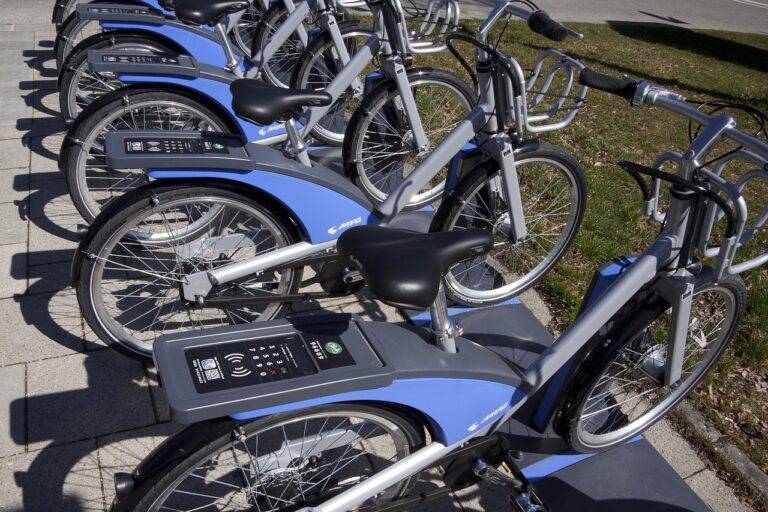The Role of a Commercial Ceiling Fan in Modern Business Spaces
When it comes to creating comfortable, energy-efficient, and aesthetically pleasing environments in offices, retail outlets, warehouses, and hospitality venues, the Commercial Ceiling Fan is an often-overlooked hero. Far from being just a decorative accessory, this equipment plays a crucial role in enhancing airflow, improving customer comfort, and reducing cooling costs. In Singapore’s warm and humid climate, choosing the right ceiling fan for commercial use is not just a matter of comfort—it’s a strategic decision that can influence employee productivity, customer satisfaction, and operational efficiency.
Understanding the Commercial Ceiling Fan
A commercial ceiling fan is designed to handle larger spaces and more intensive use than a typical household fan. These fans are built with robust motors, wider blade spans, and durable materials that can withstand continuous operation. While domestic fans are typically used in bedrooms or living rooms, commercial fans are a staple in restaurants, shopping malls, factories, and public venues where air circulation needs are more demanding.
The main purpose of these fans is not necessarily to lower the temperature, but to create a cooling effect through enhanced air movement. This can make a space feel several degrees cooler without relying solely on air conditioning. By improving air circulation, they also help reduce humidity levels, making the environment more pleasant and less prone to mold or odors.
Why Businesses Choose Ceiling Fans Over Other Cooling Solutions
While air conditioning remains the go-to choice for cooling in hot climates, it comes with high energy costs, regular maintenance requirements, and environmental impact. A well-chosen commercial ceiling fan offers an economical and eco-friendly alternative or supplement to air conditioning.
1. Energy Savings – By circulating air effectively, these fans can allow businesses to raise the thermostat by a few degrees without sacrificing comfort. This small change can lead to significant energy savings over time.
2. Wide Coverage – Unlike pedestal or wall fans, which target specific zones, ceiling fans can move air evenly across an entire space. This makes them ideal for large, open areas.
3. Low Maintenance – Most commercial fans are designed for long-term use with minimal servicing, reducing operational downtime.
4. Design Flexibility – Today’s models are available in a variety of styles, from sleek, modern designs for upscale venues to heavy-duty industrial fans for warehouses.
Key Features to Look for in a Commercial Ceiling Fan
When selecting the right model for your business, it’s important to consider:
-
Blade Span & Pitch – Larger blades with an appropriate pitch ensure maximum airflow.
-
Motor Power – A high-quality, energy-efficient motor is essential for reliable performance.
-
Material – Stainless steel, aluminum, or high-grade ABS blades can withstand heavy use and varying humidity levels.
-
Speed Controls – Multiple speed settings give you more control over airflow.
-
Reversible Rotation – Some fans allow you to reverse blade rotation in cooler months to push warm air downwards, enhancing heating efficiency.
Applications Across Different Business Sectors
-
Hospitality Industry – Restaurants and cafés benefit from ceiling fans that create a gentle breeze, encouraging customers to linger longer without the chill of over-active air conditioning.
-
Retail Stores – Enhanced comfort can positively influence shopping behavior, leading to longer visits and increased sales.
-
Warehouses & Factories – In large industrial spaces, air circulation is vital for worker comfort and for maintaining the quality of stored goods.
-
Educational Institutions – Classrooms and halls benefit from consistent airflow, improving concentration and overall comfort.
Installation and Placement Tips
Even the best fan won’t perform optimally if installed incorrectly. Proper placement ensures maximum airflow without causing discomfort from excessive direct wind. For most commercial spaces, ceiling fans should be installed at least 8–10 feet above the floor, with adequate spacing between fans for even coverage. In very large rooms, a combination of multiple fans may be necessary.
It’s also wise to engage a professional installer who understands local safety standards and wiring regulations. This ensures not only optimal performance but also safety compliance—especially important in public or employee-occupied areas.
Sustainability and the Modern Workplace
Sustainability is more than a buzzword; it’s a responsibility that modern businesses are increasingly embracing. A commercial ceiling fan fits perfectly into a green building strategy. By reducing reliance on air conditioning, it lowers electricity usage and cuts down on greenhouse gas emissions.
Some energy-efficient models now come with advanced DC motors that consume significantly less power than traditional AC motors, making them ideal for eco-conscious organizations. Additionally, fans with smart controls can adjust speed automatically based on room occupancy or temperature, further optimizing energy use.
Maintenance for Long-Lasting Performance
Although commercial fans are low-maintenance, periodic checks will extend their lifespan:
-
Dusting Blades – Dust buildup can reduce efficiency and lead to wobbling.
-
Tightening Screws – Vibrations over time can loosen connections.
-
Motor Inspection – Ensuring the motor remains free of debris or unusual noise helps prevent breakdowns.
These small steps keep the fan running smoothly and efficiently for years, protecting your investment.
The Aesthetic Factor
While function is the priority, the visual appeal of a commercial ceiling fan should not be underestimated. A well-chosen fan can complement interior design, serving as both a functional and decorative element. Many modern models feature sleek finishes, integrated lighting, and customizable blades to match branding or décor themes.
Conclusion
In today’s competitive business environment, customer comfort, employee well-being, and energy efficiency are more important than ever. The Commercial Ceiling Fan is a cost-effective, versatile, and eco-friendly solution that ticks all these boxes. Whether it’s adding a touch of sophistication to a high-end retail store, ensuring consistent air circulation in a busy restaurant, or keeping temperatures manageable in a warehouse, the right ceiling fan can make a tangible difference.
With thoughtful selection, professional installation, and regular upkeep, this simple yet powerful tool will serve your business for years—improving air quality, reducing costs, and creating a more pleasant environment for everyone who walks through your doors.







